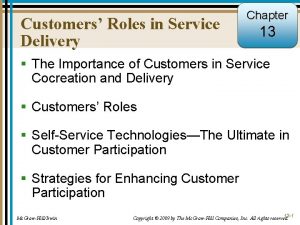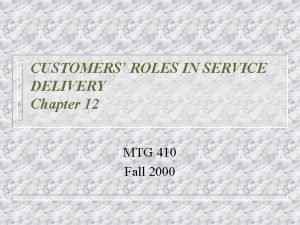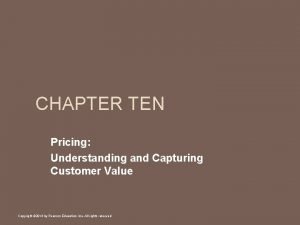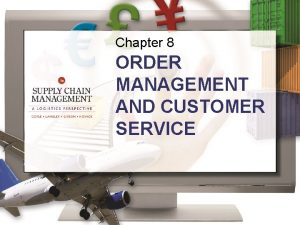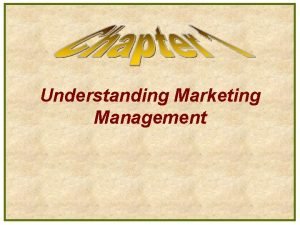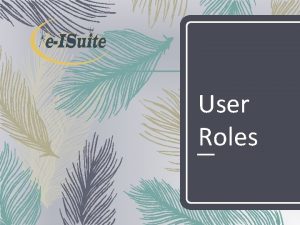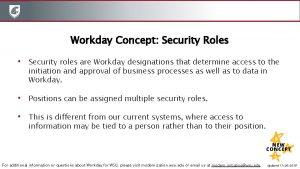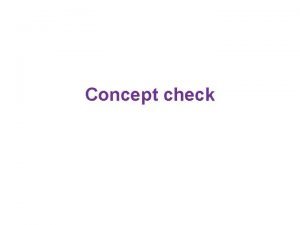Understanding Customer Roles Concept Understanding Customer Roles Understanding











- Slides: 11

Understanding Customer Roles Concept

Understanding Customer Roles

Understanding Customer Roles Step 1 People. Soft Receivables enables you to identify different types of customers in your system. These customers are defined by the roles that are assigned to them, such as Corporate, Sold To, Bill To, and Correspondence customer.

Understanding Customer Roles Step 2 Customer roles identify different system and business process options available to the customer. For example, to be able to ship orders to a customer, you must identify that customer as a Ship To customer. In addition, you must indicate that the customer is a Bill To customer so that invoices for that customer are processed in People. Soft.

Understanding Customer Roles Step 3 Similarly, if you receive payments from a customer, you identify that customer as a Remit From customer. If you have a large corporate customer, you may ship orders to one address, send the bills to another address, and correspond to a third address. In case a customer is a single entity, you can bill to, ship to, and sell to the same address. In this case, you can have different contacts at the customer address.

Understanding Customer Roles Step 4 When you assign different roles to a customer, you must specify a primary address associated with each Bill To, Ship To, and Sold To role.

Understanding Customer Roles Step 5 You define customer roles based on the customer's organization and internal business structure. For example, a customer can also be a supplier. This type of relationship can be identified in the customer's general information.

Understanding Customer Roles Step 6 In this scenario, your customer Blue Stone Graphics has one address. This customer purchases, receives, and pays for all of the goods or services that your company provides. Therefore, you assign Corporate, Sold To, Bill To, Ship To, and Remit From customer roles to Blue Stone Graphics.

Understanding Customer Roles Step 7 Consider another scenario. A large customer, Halifax Press, has several divisions. Each division orders and receives its own supplies. However, the home office pays all invoices. In this case, you define Halifax Press as a Corporate and Remit From customer. In addition, each division is designated as a Sold To, Ship To, and Bill To customer.

Understanding Customer Roles Step 8 In summary, People. Soft Receivables provides flexibility in the identification of customers. A customer can be assigned more than one role. These roles identify the way the system interacts with the customer.

Understanding Customer Roles Step 9 To summarize, customer information is associated with the different roles. A customer can play one or many different roles within the People. Soft Receivables process. You have successfully completed the understanding customer roles topic. End of Procedure.
 What is life role
What is life role Roles of customers in service delivery
Roles of customers in service delivery 3 roles of customers
3 roles of customers Customer as productive resources
Customer as productive resources Perbedaan pemasaran dan penjualan
Perbedaan pemasaran dan penjualan The real and ideal self concept
The real and ideal self concept Pricing understanding and capturing customer value
Pricing understanding and capturing customer value Order management & customer service relationship concept
Order management & customer service relationship concept Introduction to marketing
Introduction to marketing Beyond customer satisfaction
Beyond customer satisfaction Using marketing information to gain customer insights
Using marketing information to gain customer insights Customer relationship management and customer intimacy
Customer relationship management and customer intimacy

